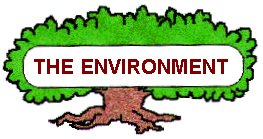

Home Page |
MICHIGAN FORESTS FOREVER TEACHERS GUIDE
| WHAT IS AN INSECT? |  |
All ADULT insects have the following characteristics:
Immature insects are segmented and often worm-like (maggots, larvae, caterpillars, etc.).
|
The basic life cycle of an insect goes from an egg, to a larval stage, the formation of a pupa or cocoon, and lastly an adult. The transition from immature to adult, inside the pupa or cocoon, is called metamorphosis. There are four kinds of metamorphosis, complete (butterflies), gradual (grasshoppers), incomplete (dragonflies), none (lice). We are usually most familiar with complete metamorphosis, made well-known through monarch butterfly studies.
Insects have more species that all other taxa combined. Their variety of structure and function in the ecosystem make them fascinating targets for study. A few interesting notes about insects . . . some . . .
In the forests, insects have a full range of roles, or niches, to play. There are species both harmful and helpful to trees, and many that don't affect trees in one way or another. Harmful insects attack trees in one or more place. Helpful insects might parasitize harmful species, or serve to fertilized flowers, or perform other direct or indirect helpful functions.
The U.P. Tree Identification website has a pretty good collection of common insects and diseases. .
Return to TOP
of Page.
Return to FOREST HEALTH Page.
 |
This website was developed and created by Michigan State University Extension for the teachers of the State of Michigan. |